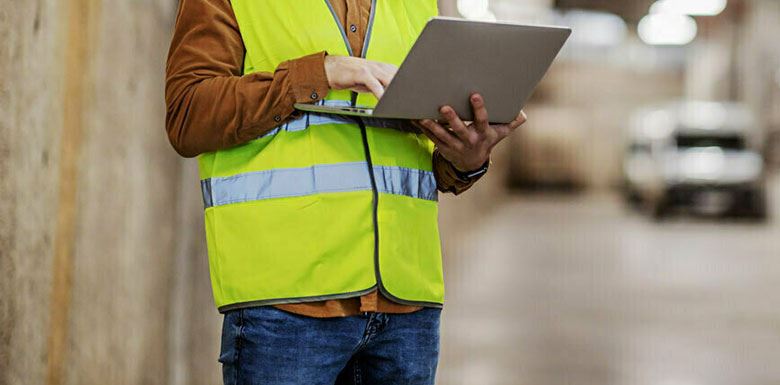Small business tax: what you need to pay
 In this article
In this article
What taxes do small businesses pay?
The type of tax you pay when you’re a trader, and the method you use to pay it, will depend on your company’s business structure.
A sole trader’s tax bill will differ from that of a limited company, or a partnership.
In this guide, we’ll outline the taxes you can expect to pay when running your business, and how they’re calculated. You can find out more detailed information on our guide to each specific tax.
Corporation tax
Corporation tax is applied to the profits earned by limited companies - not sole traders or partners.
It’s calculated after salaries and other business expenses have been paid, but before dividends are withdrawn.
Unlike income tax, companies don’t benefit from any kind of personal allowance, so tax must be paid on all profits.
However, there are plenty of allowable expenses that can reduce your bill, such as equipment, travel between customers, employee salaries, and employer pensions contributions.
The main rate of corporation tax for company profits is currently 25% for the year 2023-4.
If your company makes a profit of more than £250,000, you’ll pay the main rate of tax.
If your company made a profit of less than £50,000, you pay something called the ‘small profits’ rate, which is just 19%.
If you earn between these two thresholds, you might be entitled to marginal relief. You can use a calculator on the Government website to work out how much corporation tax you will pay with marginal relief.
How to pay
As each business’s accounting year is different, filing and paying corporation tax can be tricky.
Each year, you'll need to submit a CT600 form to HMRC - also known as a company tax return - providing details of the company's income, as well as deductions for tax allowances and expenses. This is due 12 months from the end of your company's accounting period.
However, you'll need to pay your corporation tax bill by nine months and one day after the end of your company's accounting date. So, in practice, it makes sense to complete your company tax return early to find out how much corporation tax you owe.
It's down to the business to declare how much corporation tax it needs to pay. HMRC won't instruct you.
You could risk a fine if you pay your tax late, file your tax return after the deadline, or provide inaccurate information.
To pay, you must log into your HMRC account and choose a payment method, including online payment, direct debit, company credit card, or via your bank. You can also make payments over the phone.
You can no longer pay at a Post Office, but you can pay in person at a bank or building society, as long as you have an HMRC paying in slip.
Different methods take different amounts of time, so make sure you don’t leave it too late for your chosen method. You can find out the average timings on the HMRC website.
Value Added Tax (VAT)
VAT is a tax that's added to most goods and services. Most things attract the standard VAT rate of 20%, but some - including children's car seats, mobility aids, and home energy, for example - have a reduced rate of 5%.
There are some goods that are 0% rated, such as food and children’s clothing. Others are exempt entirely, including postage stamps, financial and property transactions.
If your company is VAT-registered, you must charge your customers VAT on top of your prices. But you'll also be able to reclaim VAT that you pay on business expenses.
To calculate what you should charge, simply add your VAT rate to normal prices. For instance, if you normally charge £1,000 to install a wooden garden shed, and VAT is 20%. You will need to invoice customers for £1,200.
Companies don't have to register for VAT unless their annual taxable turnover exceeds the VAT threshold, which is £85,000 - set to remain unchanged until at least 31 March 2024.
However, you can register voluntarily. This gives you the advantage of claiming VAT back for anything you purchase for your business - including the likes of laptops, tools and stationery. However, it does mean you'll have to submit VAT returns to HMRC.
If you’re exporting goods to another country, you will charge a zero rate on them. You have to include VAT on your invoices, but charge at 0%. Zero rates apply to goods exported from:
- Great Britain to somewhere outside the UK
- Northern Ireland to somewhere outside the UK and EU
How to pay
It is now mandatory for VAT-registered businesses to use Making Tax Digital (MTD), which involves keeping records and submitting VAT returns via MTD-compatible software.
This has been required since April 2019 for businesses with a taxable turnover above £85,000, but came into force for all VAT-registered businesses on 1 April 2022, regardless of turnover.
If your business comes into this scope, you must register for Making Tax Digital, keep digital VAT records and submit your VAT returns to HMRC using compatible software. There's a list of compatible software online.
You must keep digital records starting from 1 April 2022 or the beginning of your VAT period.
Find out more: self-employed VAT return
Business rates
If your business is run from an office, shop, factory, builders’ yard, or warehouse - anywhere that isn't a domestic property - then it's likely you'll be charged business rates on this property.
This works in a similar way to council tax. Business rates bills are calculated and sent out by local authorities. You'll usually receive the bills in February or March, detailing what you need to pay for the financial year starting on the following 1 April.
Business rates are calculated on the property's 'rateable value' meaning its estimated rental value on the open market. The Valuation Office Agency (VOA) carries out revaluations of commercial properties. The most recent revaluation came into effect on 1 April 2017, and refers to values as of 1 April 2015.
There are a few instances where you can be charged business rates if you run a business from your home. This could happen if:
- you employ staff who come and work at your home
- you sell goods or services from your home to customers who visit the property
- you've adapted your home to work there - for instance, converted a garage
- the property is part-business and part-domestic - for instance, a pub with living quarters above it.
HMRC has further details on how to estimate your business rates.
Small business rates relief
If your property's rateable value is less than £15,000, and your business only uses one site, you may be able to get business rates relief.
For properties with a rateable value of less than £12,000, you'll pay no business rates. For properties with a rateable value between £12,001 and £15,000, the rate of relief will gradually reduce from 100% to 0%.
So, for example, if your property's rateable value is £14,000 you'll get 33% off your business rates.
To apply for this relief, you'll need to contact your local council.
How to pay
Business rates are paid to the local authority where your business premises is located. Like council tax, most councils split the bill into 10 payments, to be paid over the course of 12 months.
Most will accept various payment methods such as direct debit, paying by phone, online and at your own bank.
Dividend tax
If you're a company shareholder, you can pay yourself in dividends. In 2023-24, the first £1,000 are tax-free, but if you receive any more than this, you'll have to pay dividend tax.
The rate you'll pay depends on your income tax band. In 2023-24, basic-rate taxpayers pay 8.75%; higher-rate taxpayers pay 33.75% and it's 39.35% for those who pay additional-rate tax.
If your only income is from dividends, you can use up your personal allowance in addition to your dividend allowance.
For the 2023-24 tax year, that means you can earn the £12,570 personal allowance, plus the £1,000 dividend allowance - meaning you could earn a total of £13,570 from shares before having to pay any tax.
How to pay
You need to include any dividend income in your self-assessment tax return. Our guide on how to file a self-assessment tax return explains everything you need to know.
- Find out more: dividend tax explained
Income tax
20% - basic rate; 40% - higher rate; 45% - additional rate
Income tax is only payable by individuals, so business owners won't have to pay any income tax for the business itself.
However, if their income is above the personal allowance (£12,570 for the 2023-24 tax year, the same as in 2022-23), they'll be liable to pay income tax.
The amount you pay will depend on your tax band. Keep in mind that other earnings - like dividends, savings interest or capital gains - may also count towards your income, and push you into a higher tax band.
How to pay
If you're a sole trader, you'll pay income tax on the profit you make from your business. You'll need to submit a self-assessment tax return to HMRC to calculate how much you owe.
If you're paid by the company, income tax will be taken through the company's PAYE scheme. It's at this point you'll also pay any personal National Insurance contributions you owe. You may also have to complete a self-assessment form, for instance if you pay yourself dividends from the company on top of your salary.
- Find out more: tax-free income and allowances
National Insurance
If your business employs people, you'll need to pay the employer's portion of National Insurance contributions directly to HMRC. Businesses pay 13.8% for employees with earnings above £12,570 in 2023-24.
You may be able to reduce your NICs by up to £5,000 if the business is eligible for the Employment Allowance. This was launched in April 2014 with an aim to help small businesses recruit more staff.
If you're employed by your limited company, your National Insurance contributions will be taken automatically through payroll.
Sole traders pay National Insurance as part of self-assessment tax.
For the 2023-24 tax year, self-employed NICs work like this:
- those with profits of less than £6,725 won't be required to pay
- Those earning between £6,725 and £12,570 won't be required to pay Class 2 contributions, but will still accrue National Insurance credits.
- Those who earn more than £12,570 will pay Class 2 contributions of £3.45 per week, in addition to Class 4 contributions of 9% on earnings up to £50,270.
- Those with earnings above £50,270 will pay Class 4 contributions of 2%.
Find out more: National Insurance rates
Capital Gains Tax (CGT)
CGT is payable when you sell something for a profit. For individuals, this tends to be possessions. For small business owners, it's paid if you sell or give away an asset, shares or your whole company. For example, if you dispose of land and buildings, fixtures and fittings, plant and machinery, shares and registered trademarks.
The rate you pay will depend on your individual income tax - basic-rate taxpayers pay 10%, while higher-and additional- rate taxpayers pay 20%. If you're selling a property that's not your main home, the rate rises to 18% for basic-rate payers and 28% for higher- or additional-rate payers.
Bear in mind that capital gains will count towards your income for the year, so a large profit could push you into a higher tax bracket.
To work out how much you'll pay on the sale of your business, you can take the sales price, and deduct what you paid for it, as well as any investments in the business and costs related to buying or selling it. Then you're left with the gains.
From this, you can deduct your personal capital gains allowance. In 2023-24 individuals can earn up to £6,000 before tax (down from £12,300 in 2022-23), and couples can pool their allowances.
Business assets disposal relief (also known as entrepreneurs' relief)
In some circumstances, you may be able to claim entrepreneurs' relief to reduce the CGT you have to pay. If you qualify, you'll pay a lower CGT rate of 10% on the first £1m of gains.
This allowance is applied per person, rather than per business that you sell.
You may be able to claim if:
- you are a sole trader or partner selling part or all of your business or its assets
- you control at least 5% of the company's net assets, of which you are selling and are entitled to 5% of its distributable profits
- you sell assets from the business within three years of closing down.
You'll need to have been in qualifying circumstances for at least two years, and the relief doesn't apply to property portfolios - though the one exception is furnished holiday letting businesses.
Any gains above the £1m threshold will be taxed at the full CGT rate.
How to pay
You'll need to include capital gains as part of your tax return. If you make a capital gain from selling property, you'll need to submit a 'residential property return' within 60 days of the sale or disposal.
Capital Allowances
You can claim capital allowances when you buy certain tools to use in your business, such as company vehicles, equipment and machinery.
You can deduct some or all of the cost of these items from your profits before paying tax, which will reduce your tax bill.
The annual investment allowance (AIA) for sole traders, partners and limited companies is £1m. This had initially been a temporary increase, but the government confirmed it would not be reduced in the 2023 Spring Budget.
You can also use the 'writing down allowance' for assets that fall outside the AIA rules.
We explain how it works in our guide to self-employed capital allowances.
How to claim
Sole traders can claim as part of their tax return. Partners claim through a partnership tax return, and limited companies can use a company tax return.
If you're a sole trader or partner with an income of less than £150,000 a year, you may be able to use a simpler 'cash basis' system instead - find out more about how this works on the government's website.
Cash in hand
It’s perfectly legal for traders to accept cash-in-hand payments for jobs, however you must declare them to HMRC, so that you pay the right amount of tax.
If you’re a sole trader, any income you receive in cash, should be taxed at your personal income tax rate. You need to add the earnings to your self-assessment so they can be factored into your tax liability calculation.
If you have a limited company, then income received as cash, should be logged and will attract corporation tax.
If the company turnover is more than £85,000 a year, it will also have to charge VAT to customers and file VAT accounts to HMRC. Cash in hand payments are still subject to VAT tax.
If you do not declare cash in hand payments appropriately, this could be tax evasion, which means you could go to prison or face a hefty fine.
HMRC has several ways of checking up on you, including comparing your company accounts with others in similar sectors to spot differences.
How to pay
Any payments you receive in cash should be properly reported to HMRC. If it’s your personal income, it must go on your self-assessment form. If the business is paid in cash, you must add it to your company tax return.




